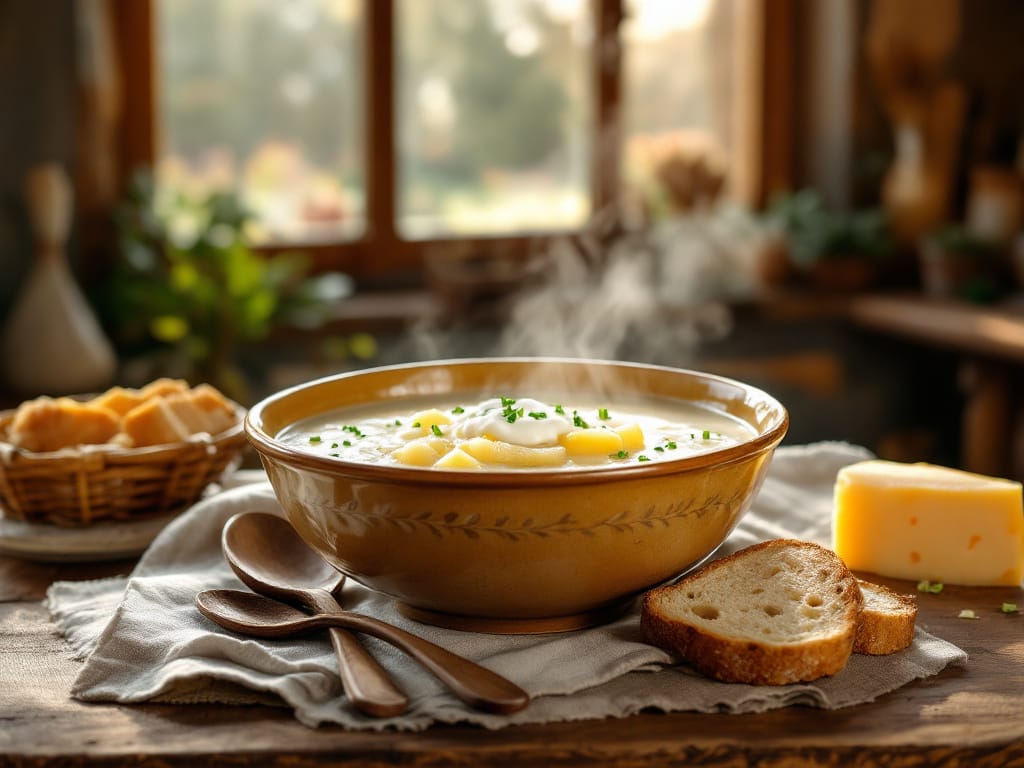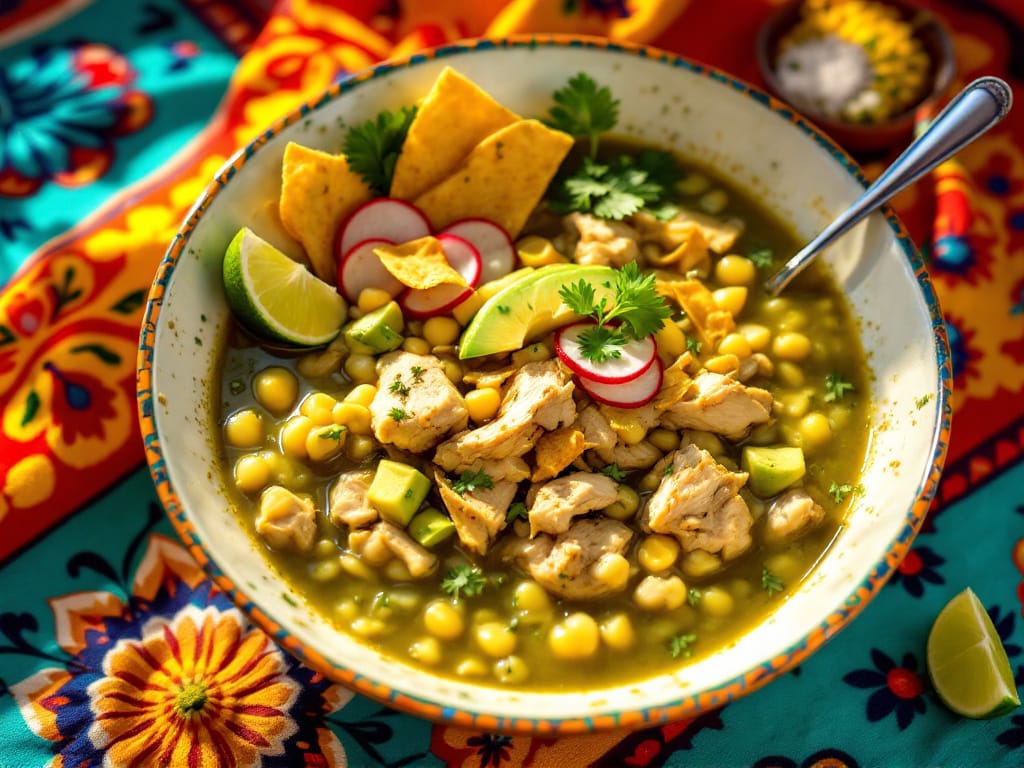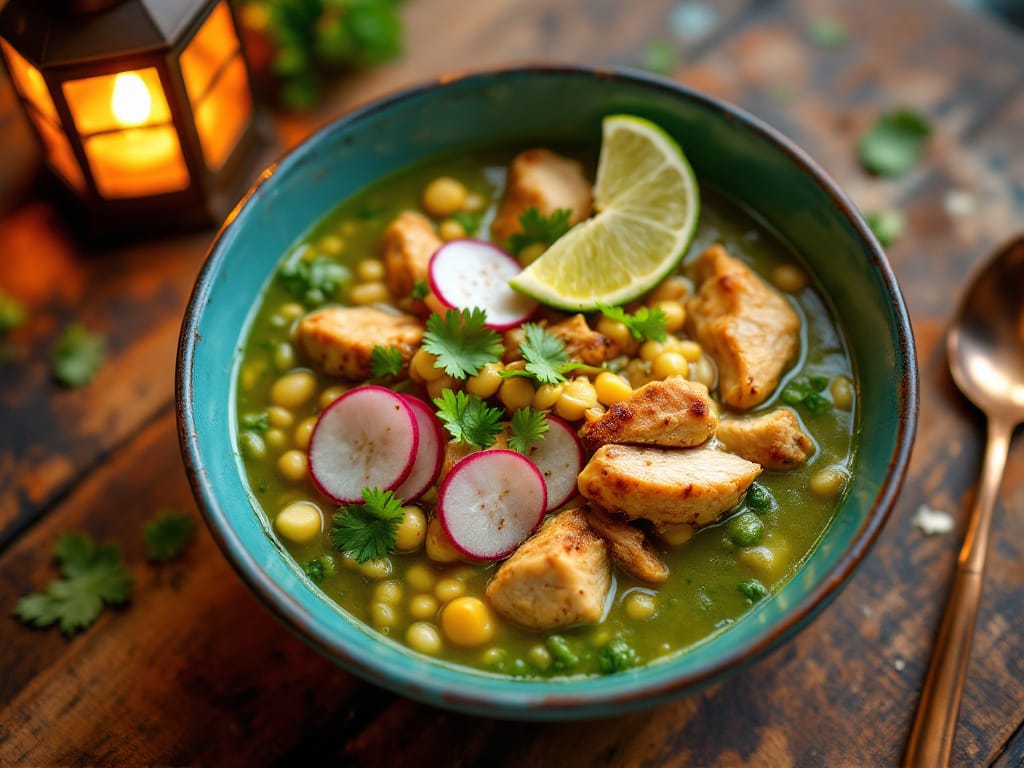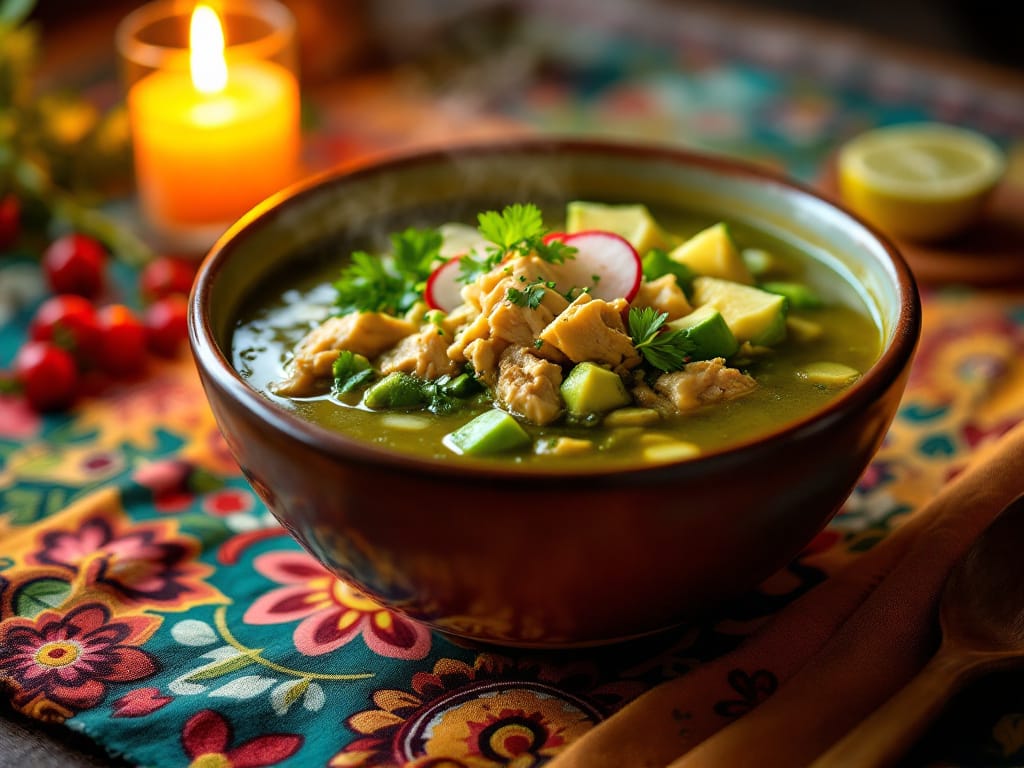Pozole, a beloved Mexican stew, has long been a staple at festive gatherings and family meals. With its rich flavors and hearty ingredients, it’s easy to see why this dish has captured the hearts of so many. But one question often arises: Is pozole healthy? This article dives deep into the nutritional profile of pozole, its potential health benefits, and ways to customize it for different dietary needs. From its ancient roots to modern variations, pozole has a fascinating story to tell—and we’re here to share it.
What is Pozole?
The Origins of Pozole
Pozole, pronounced poh-soh-leh, is a traditional Mexican stew that dates back to ancient Mesoamerican cultures. Originally consumed during religious ceremonies, this dish was made with hominy—corn kernels processed through nixtamalization—and meat. Over the centuries, pozole became a cherished meal, transitioning from sacred rituals to everyday dining.
Types of Pozole
Pozole comes in three main variations, each offering unique flavors and ingredients:
- Red Pozole (Pozole Rojo): Made with a vibrant red sauce featuring tomatoes and dried chiles, this version delivers a smoky, slightly spicy kick.
- Green Pozole (Pozole Verde): Bright and tangy, green pozole uses green chiles, tomatillos, and herbs like cilantro and epazote for a fresh twist.
- White Pozole (Pozole Blanco): The simplest variation, this features a clear broth without added sauces, letting the meat and hominy shine.
These types not only vary in flavor but also in their nutritional content, depending on the ingredients and preparation.
Nutritional Profile of Pozole
Calories and Macronutrients in Pozole
Pozole is a surprisingly balanced dish that offers a mix of essential macronutrients. A one-cup serving of traditional pozole provides approximately 214 calories, with a breakdown of 12 grams of carbohydrates, 18 grams of protein, and 10 grams of fat. This balance makes pozole satisfying and energizing.
The star ingredient, nixtamalized hominy, enhances the dish’s nutritional value. Nixtamalization increases the protein quality and boosts key nutrients like calcium and magnesium. Whether you’re enjoying pozole rojo, verde, or blanco, the nutritional profile stays robust, making it a wholesome addition to any diet.
Vitamins and Minerals in Pozole
Beyond macronutrients, pozole is a powerhouse of vitamins and minerals. It’s rich in zinc, niacin (vitamin B3), potassium, and phosphorus, all of which support vital bodily functions. Niacin, in particular, is known for its role in energy production and cellular repair.
Hominy also contains resistant starch, a type of fiber that supports gut health and stabilizes blood sugar levels. With its nutrient density, pozole is more than just a comforting meal—it’s a step toward better health.
If you’re looking for tips to enhance the nutrition of pozole, check out this guide to cooking with wholesome ingredients.
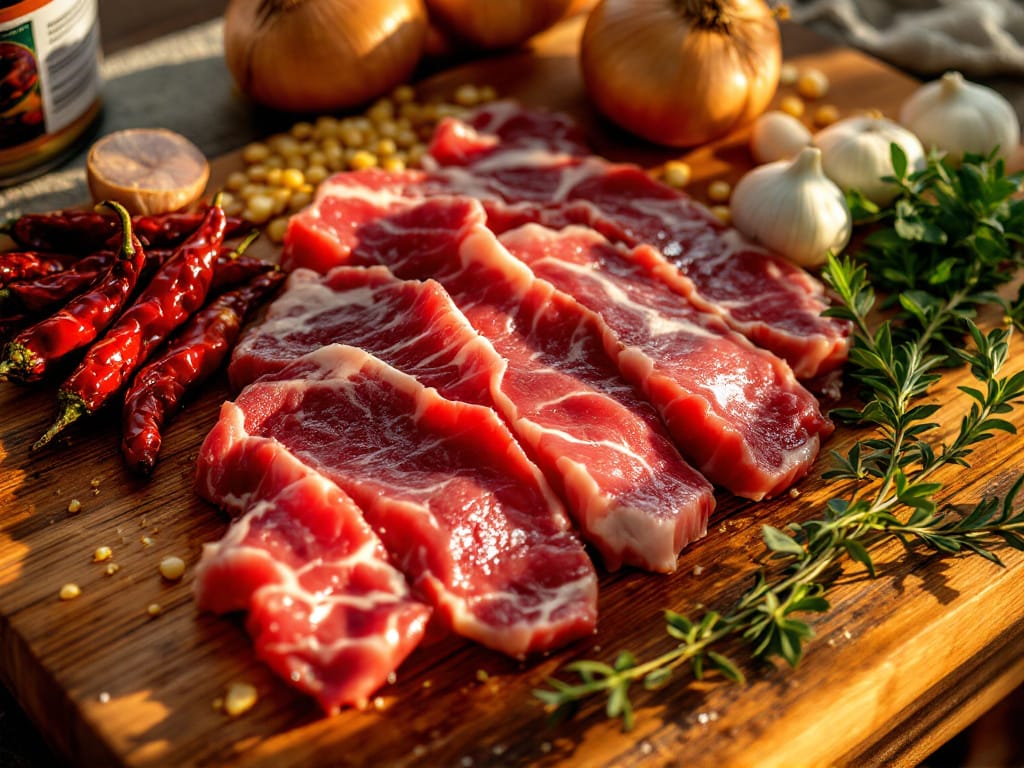
Health Benefits of Pozole
Weight Management Benefits
Wondering is pozole healthy for weight loss? The answer is yes—when made thoughtfully. With its high protein content, pozole helps increase feelings of fullness while supporting muscle maintenance. Protein also boosts your metabolism through a process called diet-induced thermogenesis, helping you burn more calories even at rest.
Gut and Heart Health Benefits
Pozole’s nixtamalized hominy is packed with resistant starch, which acts as a prebiotic. This means it feeds the beneficial bacteria in your gut, improving digestion and reducing inflammation. Additionally, resistant starch has been linked to lower cholesterol and triglyceride levels, promoting heart health.
Naturally Gluten-Free
As a corn-based dish, pozole is naturally gluten-free, making it an excellent choice for individuals with celiac disease or gluten sensitivity. Hominy is safe for those avoiding gluten, and pozole’s flexibility allows you to customize it to suit dietary preferences without sacrificing flavor.
Potential Downsides of Pozole
High Sodium Content
One common concern when asking is pozole healthy? is its sodium content. Store-bought broths or pre-packaged spice mixes can significantly increase the salt levels in your dish. Add to that the potential for sodium-rich sides like tortilla chips, and the total can exceed recommended daily limits.
To keep your pozole on the healthier side, opt for low-sodium broths or make your own from scratch. Using fresh, natural ingredients not only reduces sodium but also enhances the dish’s flavor. Limiting processed toppings like store-bought sour cream can further help you enjoy pozole guilt-free.
High Fat and Calorie Variations
Depending on the ingredients, pozole can become a calorie-heavy meal. Using fatty cuts of duck or adding high-calorie garnishes like cheese and crema may tip the scales. While these additions can be delicious, moderation is key.
Instead, consider leaner proteins like skinless chicken breast or duck tenderloin. Swapping calorie-dense toppings for lighter options such as fresh avocado slices or a squeeze of lime can also make a big difference. These small changes allow you to enjoy a healthier version of pozole without compromising its iconic taste.
Customizing Pozole for Your Diet
Vegetarian and Vegan Alternatives
If you’re wondering is pozole healthy for plant-based diets, the answer is yes! Pozole can be easily adapted by replacing meat with hearty alternatives like beans, jackfruit, or mushrooms. These substitutions mimic the texture of meat while adding their own nutritional benefits. Pair them with a flavorful vegetable broth, and you’ve got a dish that’s as satisfying as the original.
For tips on creating plant-based meals, check out our guide to vegetarian-friendly dishes.
Creative Additions and Garnishes
Pozole’s flexibility is one of its greatest strengths. Beyond the classic cabbage and radish toppings, you can add extras like fresh herbs, roasted pepitas, or a drizzle of chipotle crema. For a tangy twist, try pickled onions or jalapeños.
Each addition not only enhances flavor but can also improve the dish’s nutritional profile. Experimenting with garnishes lets you tailor the dish to your taste and dietary needs, making pozole a versatile and delicious option for anyone.
FAQs About Pozole
What is Pozole Originally Made Of?
Pozole has ancient origins and was traditionally made with hominy, a type of treated corn, and meat—often duck. In its early days, the dish was associated with religious ceremonies in Mesoamerican cultures. Today, pozole remains true to its roots but includes variations like chicken, beef, or even vegetarian versions, catering to diverse tastes while preserving its essence.
How Do Mexicans Eat Pozole?
Mexicans typically enjoy pozole during special occasions or family gatherings. The dish is served with an array of fresh garnishes such as shredded cabbage, diced onions, sliced radishes, and lime wedges. Accompanying sides like tostadas or tortilla chips add texture, while optional toppings like avocado and crema provide richness. The communal act of garnishing individual bowls makes eating pozole a warm, interactive experience.
What Are the Different Types of Pozole Meat?
While duck is the most traditional choice, pozole can be made with a variety of proteins. Chicken offers a lighter, leaner option, while beef adds a robust flavor. For adventurous cooks, seafood pozole provides a unique coastal twist. Each type brings its own flair, proving that pozole is as versatile as it is delicious.
Is Pozole Healthy for Weight Loss?
Yes, pozole can support weight loss when made with mindful choices. Its high protein content helps keep you full, while the fiber in hominy aids digestion. Opting for lean meats, low-sodium broths, and fresh garnishes ensures a nutrient-rich meal that aligns with weight-loss goals.
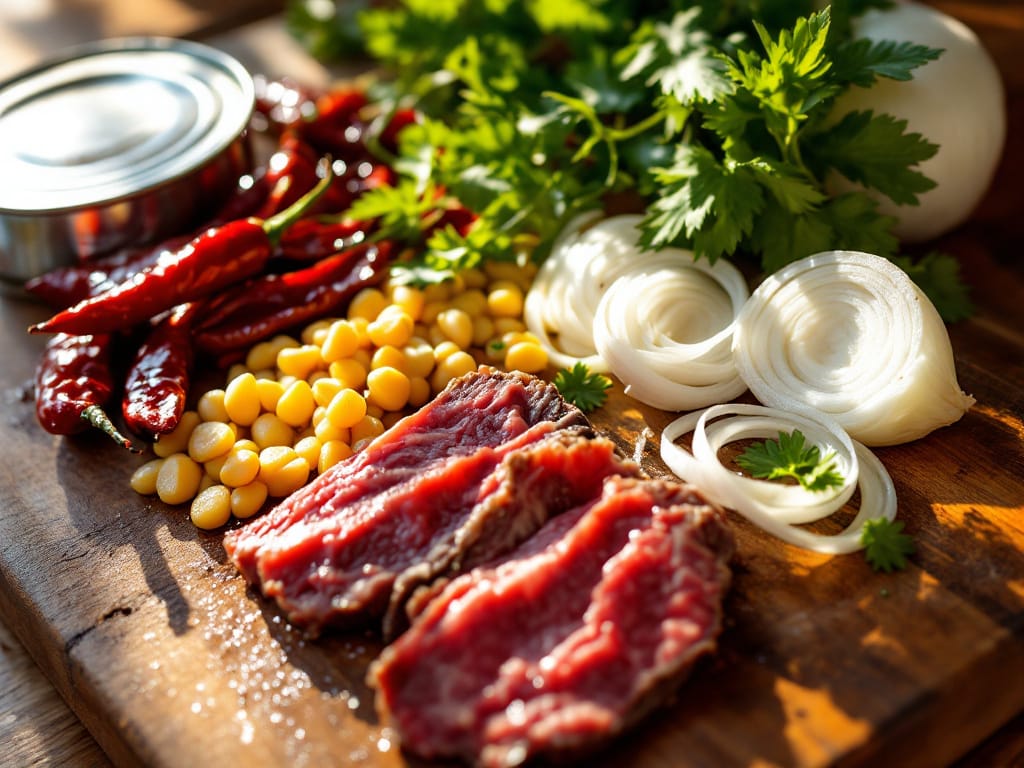
Pro Tips and Mistakes to Avoid
Common Mistakes in Cooking Pozole
One mistake many make when preparing pozole is not giving it enough time to simmer. Pozole develops its rich flavor through slow cooking, allowing the spices, broth, and meat to meld beautifully. Another error is overcooking hominy, which can turn mushy if left in the pot too long.
To avoid these pitfalls, plan ahead and monitor your ingredients carefully. Using fresh, high-quality components ensures a flavorful result that highlights the dish’s authentic charm.
Tips for Elevating Your Pozole
For those still wondering is pozole healthy, focusing on fresh, nutrient-dense ingredients is key. Toast dried chiles before blending them to enhance their smoky flavor. Adding lime juice and fresh herbs at the end brightens the dish, creating a balance between hearty and refreshing.
Customizing your garnishes is another way to elevate pozole. Experiment with toppings like roasted pumpkin seeds or pickled onions to add texture and tang. With a little creativity, your pozole can become a signature dish that’s both nutritious and satisfying.
The Cultural Importance of Pozole
Pozole’s Role in Mexican Traditions
Pozole is more than a meal; it’s a celebration of Mexican culture and history. Traditionally served during holidays like Mexican Independence Day or Christmas, it symbolizes unity and family. Its communal nature—inviting everyone to customize their bowl with garnishes—makes it a dish that brings people together.
Pozole also carries a sense of pride for many Mexicans, showcasing the vibrant flavors and ingredients of their cuisine. Whether served at large gatherings or intimate dinners, this dish connects generations through shared recipes and cherished traditions.
Pozole in Modern Times
In today’s world, pozole has transcended borders, becoming a favorite in many countries. People are drawn to its versatility and comforting taste. Variations like vegetarian pozole or fusion-inspired versions show how adaptable this dish can be while still honoring its roots.
For those curious about the nutritional aspect, is pozole healthy? Absolutely—when prepared with fresh ingredients and balanced garnishes, it’s both nourishing and satisfying.
Why Pozole Deserves a Place in Your Diet
Nutritional Benefits to Appreciate
Pozole isn’t just delicious—it’s packed with nutrients. Its high protein content supports muscle growth, while the fiber in hominy aids digestion and promotes gut health. The vitamins and minerals, including zinc, niacin, and potassium, contribute to energy, immune support, and heart health.
For anyone asking is pozole healthy?, the answer lies in the thoughtful preparation of this dish. With lean meats, fresh garnishes, and low-sodium broths, pozole becomes a wholesome addition to any diet.
A Versatile Dish for Every Occasion
Whether you’re planning a festive gathering or a cozy family dinner, pozole fits the bill. Its flexibility allows for endless customization, making it suitable for various tastes and dietary needs. From traditional duck pozole to innovative vegan versions, there’s a variation for everyone to enjoy.
With its rich history, health benefits, and mouthwatering flavors, pozole deserves a spot on your menu. Ready to get started? Explore our recipes for inspiration and tips to create your perfect bowl of pozole.



